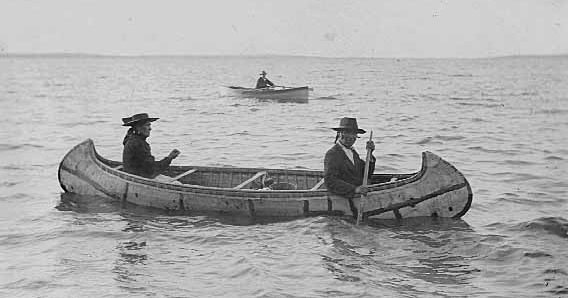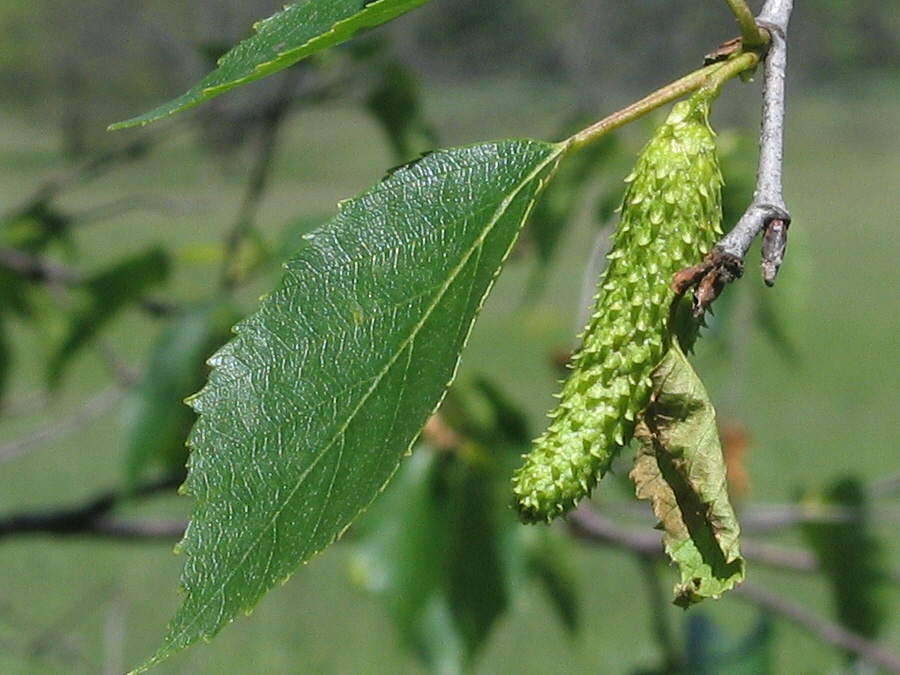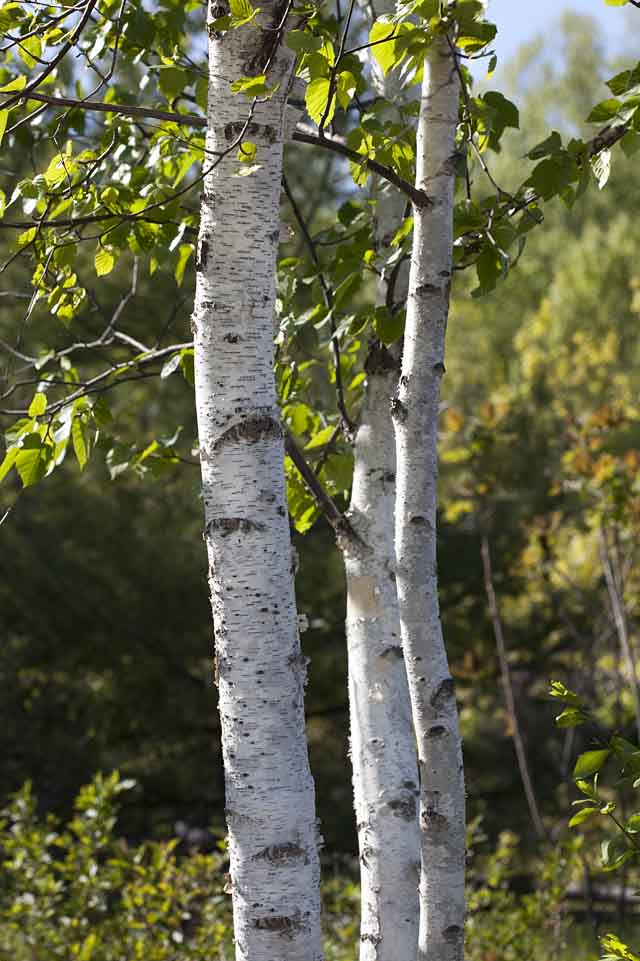Out of all native trees around Toronto, the paper birch is probably the easiest to recognize with its striking, snowy-white bark, constantly peeling away from the trunk. Surprisingly, the iconic bark of starts off very smooth and red-brown in colour – as the trees age, splits appear and the traditional white bark emerges from underneath.

Did you know that birch wood is resistant to decay and - if you need it to - will catch fire no matter how wet it is? There’s a reason it was historically used for so many things, from the construction of canoes and storage containers to snowshoes, bows, and even in the making of beer/wine. Nowadays, it is a valuable timber source for veneers and plywood as well as being a favourite in wintertime floral displays. Birch syrup and birch beer have both also risen in popularity in recent years. If you haven't experienced these delicious flavours, I suggest you pick yourself up a sample ASAP!
The leaves of this species are easy to spot - triangular in shape with a doubly-toothed edge, which turn a beautiful yellow in the fall. Its flowers, called catkins (but look nothing like a cat), resemble shaggy, green-brown caterpillars and limply hang from its branches. Both male and female catkins exist, the former first appears in the fall and hangs around until they expand and flower in the spring, while the latter emerges right before the leaves in early spring.

The catkins produce tiny nutlets that are important foraging foods for small mammals, such as voles and hares, as well as an assortment of songbirds. Young paper birches are the main winter food source for moose and white-tailed deer, especially in the north where coniferous trees tend to dominate the landscape. In the south they are a secondary food source for beavers and porcupines.
Birches are known as a pioneer species – often one of the first tree species to move into a newly disturbed area to set up shop. This means they require a lot of sunlight so they can grow fast and shade out competitors, which often creates birch-only stands until others manage to grow large enough to compete. They can grow in almost every type of soil - from bogs to sand. However, they don’t particularly care for compacted, nutrient-poor, clay soils – and without the right aid, they may not survive.

Paper birches usually flourish in urban environments (so long as they are placed well away from heavily used roadways) and are much sought-after as a landscape tree. You can find them growing in yards both as a single stem or multi-stem tree.
LEAF offers single stemmed paper birch as part of our Backyard Tree Planting Program, so if you share our love and want one of your own, contact us today to book a consultation with one of our arborists! And join me next month when I explore the life history of the juggernaut of trees – the black walnut.
